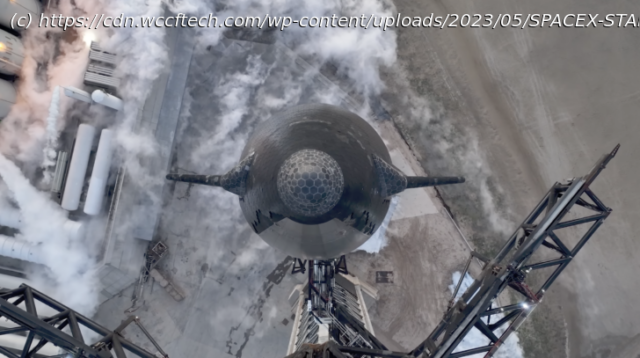SpaceX’s Starship rocket will feature more than a thousand upgrades for its flight test 2 according to Elon Musk.
After the first Starship test flight in April, SpaceX is making more than a thousand upgrades to the rocket before it makes another attempt soon, according to details shared by its chief Mr. Elon Musk. Musk shared fresh updates about Starship in a Twitter space yesterday, where he outlined that SpaceX plans to change the staging profile of its rocket to increase the performance and improve the odds of the first and second stages of the rocket separating. Stage separation was the point of failure of the first Starship test flight, and the rocket continued to flip in the air without it taking place. SpaceX has also upgraded the rocket’s engines and will add a steel plate to the pad to avoid damage from the thrust generated by the world’s largest rocket.SpaceX Makes Key Upgrades To Raptor Engine Following Starship Flight Test
Musk shared the details in a Twitter space yesterday, as he outlined that the Starship flight test 2 will feature more than a thousand upgrades. According to him, these also improve the odds of the test succeeding. SpaceX has a lot riding on a successful orbital test flight. It has invested billions of dollars into Starship, and the rocket also sits at the center of its plans to build out the Starlink satellite internet constellation and land the first humans on the Moon under NASA’s Artemis program.
Musk believes the probability of a successful launch sits at sixty percent, depending on whether the first and second Starship stages successfully separate. Due to changes made by SpaceX for the Starship flight test 2, stage separation is even more important, according to the executive:
So we made a sort of late breaking change, that’s really quite significant, to the way that stage separation works. Which is to use a hot staging, what’s called hot staging where we light the engines of the upper stage or ship while the first stage or booster stage engines are still on. So we shut down most of the engines on the booster, leaving just a few running. And then at the same time, start the engines on the ship, or upper stage, which results in kind of blasting the booster stage so you’ve got to protect the top of the boost stage from getting incinerated by the upper stage engines.
This is something that the Soviets or the Russians have used quite a bit in their rocket science. There’s a meaningful payload to orbit advantage with hot staging, that you know conservatively is about a ten percent improvement. Well depends on what it’s been compared to, but let’s say in this case roughly ten percent improvement in payload.
So we made a sort of late breaking change, that’s really quite significant, to the way that stage separation works. Which is to use a hot staging, what’s called hot staging where we light the engines of the upper stage or ship while the first stage or booster stage engines are still on. So we shut down most of the engines on the booster, leaving just a few running. And then at the same time, start the engines on the ship, or upper stage, which results in kind of blasting the booster stage so you’ve got to protect the top of the boost stage from getting incinerated by the upper stage engines.
This is something that the Soviets or the Russians have used quite a bit in their rocket science. There’s a meaningful payload to orbit advantage with hot staging, that you know conservatively is about a ten percent improvement. Well depends on what it’s been compared to, but let’s say in this case roughly ten percent improvement in payload.
SpaceX’s Falcon 9 rocket uses a pusher mechanism that separates the first and second stages to allow them to reach a safe distance before the second stage’s lone Merlin 1D engine fires up for the remaining journey. As the rocket briefly loses power, it loses out on maximum payload capacity but becomes safer overall as the first stage is protected from the thrust and force of the second stage.
However, introducing ‘hot staging’ will perhaps be the riskiest part of the Starship flight test 2, with Musk sharing:
The moment the rocket stops its engines, it actually, it starts falling. So you don’t want to be coasting, you don’t want to be in a situation where the engines are not on because you just immediately start falling back to Earth unless you’re already in orbit.






